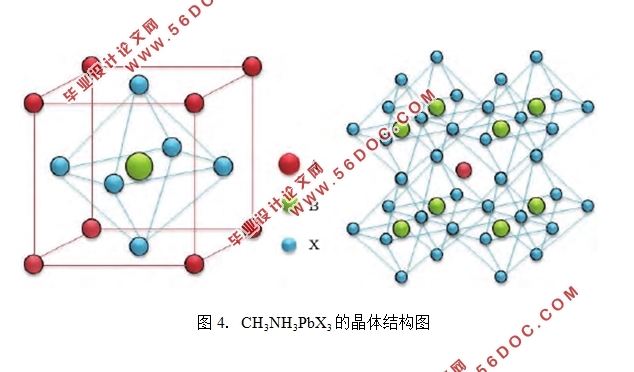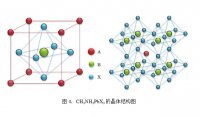CH3NH3PbX3晶体的光谱性能研究
来源:56doc.com 资料编号:5D21170 资料等级:★★★★★ %E8%B5%84%E6%96%99%E7%BC%96%E5%8F%B7%EF%BC%9A5D21170
资料以网页介绍的为准,下载后不会有水印.资料仅供学习参考之用. 密 保 惠 帮助
资料介绍
CH3NH3PbX3晶体的光谱性能研究(论文12000字)
摘要:
最近几年,有机/无机杂化钙钛矿材料的新型太阳能电池因其良好的光电性能成为研究热点。为了研究此类电池的核心材料CH3NH3PbX3的基础性能,文中主要对CH3NH3PbX3(X=Br, I)单晶的结构及光谱性能进行了研究。通过X-射线衍射(XRD)测试技术,采用Powder X软件获得CH3NH3PbX3晶体的晶格参数。利用紫外—可见吸收光谱计算得到CH3NH3PbX3的禁带宽度分别为2.21eV (X=Br)和1.44eV (X=I)。光致发光光谱(PL谱)、阴极荧光光谱(CL谱)测试表明,CH3NH3PbX3(X=Br, I)晶体发射峰的位置分别在538nm、545nm(X=Br)和776nm、795nm(X=I)。光谱测试的结果表明CH3NH3PbX3(X=Br, I)是性能优良的太阳能电池材料。
关键词: CH3NH3PbX3; 晶体结构;紫外—可见吸收光谱;禁带宽度;光致发光
Study on the spectral properties of CH3NH3PbX3 crystals
Abstract:
Recently, the solar cell based on organic/inorganic composite perovskite material has been a hot topic, because of its good photoelectric performance. In order to study the basic properties of CH3NH3PbX3, the core material of this type solar cell, in the paper, we studied the structure and spectral properties of CH3NH3PbX3 (X=Br, I) single crystals. The lattice parameters of CH3NH3PbX3 crystals were obtained by XRD with Powder X software. The band gaps of CH3NH3PbX3 were, calculated as 2.21 eV (X=Br) and 1.44 eV (X=I) ,respectively, by uv-vis-ir absorption spectra. The PL and CL spectra show that the emission peaks of CH3NH3PbX3 (X=Br, I) crystal are located at 538nm、545nm ( for X=Br) and 776nm、795nm ( for X=I) respectively. The results of spectra analysis shown that CH3NH3PbX3 (X=Br, I) crystal have good application as the solar cell materials.
Key words: CH3NH3PbX3; Crystal structure; Uv-vis-ir absorption spectra; Band gaps; Photoluminescence

目 录
1、 前言 5
1.1、太阳能电池的发展背景 5
1.1.2太阳能电池的发展历程 5
1.2、钙钛矿太阳能电池工作原理 6
1.3、太阳能电池现阶段的不足 6
2、CH3NH3PbX3的制备及结构 7
2.1、CH3NH3PbX3薄膜的制备 7
2.2、CH3NH3PbX3单晶的生长 8
2.3、CH3NH3PbX3的晶体结构 9
3、CH3NH3PbX3的光谱性能研究 11
3.1、CH3NH3PbBr3单晶的XRD图谱 12
3.2、CH3NH3PbI3单晶的XRD图谱 14
3.3、紫外—可见吸收光谱和禁带宽度 15
3.3.1紫外—可见吸收光谱 15
3.3.2禁带宽度 17
3.3、阴极荧光光谱和光致发光光谱 19
3.4、小结 20
4、结论与展望 21
参考文献 22
致谢 24
|



